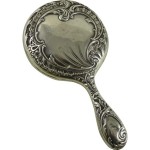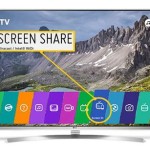Screen Mirroring iPad to Sony Bravia TV: A Comprehensive Guide
Screen mirroring, the process of wirelessly displaying the content from one device onto another, has become a ubiquitous feature in modern technology. It offers a convenient way to share presentations, watch videos, view photos, or even play games on a larger screen. This article focuses on the methods and considerations involved in screen mirroring an iPad to a Sony Bravia television.
Sony Bravia TVs, renowned for their picture quality and smart features, are designed to integrate seamlessly with various devices. iPads, known for their user-friendly interface and powerful processing capabilities, are frequently used for content consumption and creation. Bridging these two devices through screen mirroring can enhance the user experience significantly.
There are several approaches to mirroring an iPad's screen to a Sony Bravia TV. Each method has its own advantages and disadvantages in terms of ease of setup, picture quality, latency, and compatibility. The most common methods include using Apple's AirPlay, third-party screen mirroring apps that support Miracast or similar protocols, and physical connections via adapters and cables.
Using AirPlay for Seamless Integration
AirPlay is Apple's proprietary wireless streaming technology that allows users to effortlessly share audio and video between their Apple devices and AirPlay-compatible devices. Many newer Sony Bravia TVs support AirPlay 2, enabling direct screen mirroring from an iPad without the need for additional hardware.
To use AirPlay, both the iPad and the Sony Bravia TV must be connected to the same Wi-Fi network. The user can then access the Control Center on the iPad (swipe down from the top-right corner of the screen on newer iPads or swipe up from the bottom on older models) and tap the "Screen Mirroring" icon. A list of available AirPlay devices will appear, and the user should select their Sony Bravia TV. If prompted, the user might need to enter an AirPlay passcode displayed on the TV screen.
Once connected, the iPad's screen will be mirrored on the Sony Bravia TV. The audio and video content will be streamed wirelessly, allowing users to watch movies, view photos, or give presentations on a larger display. AirPlay generally offers excellent picture quality and low latency, making it suitable for most applications. However, performance can be affected by the strength and stability of the Wi-Fi network. Overcrowded Wi-Fi networks or significant distance between the devices can introduce lag or interruptions in the streaming.
AirPlay also offers the ability to stream specific apps rather than the entire screen. This can be useful if the user only wants to share a particular video or presentation without displaying other content on the iPad. The user can simply select the AirPlay icon within the specific app to initiate streaming to the Sony Bravia TV.
It is important to ensure that both the iPad and the Sony Bravia TV are running the latest software updates. Updates often include performance improvements and bug fixes that can enhance the AirPlay experience. If encountering issues with AirPlay, restarting both devices and the Wi-Fi router can often resolve the problem.
Troubleshooting AirPlay connections involves verifying the proper configuration of the devices. Confirm that AirPlay is enabled in the TV's settings. Some TVs might require manual activation of the AirPlay feature. Also, ensure that the iPad and TV are on the same subnet of the Wi-Fi network. If multiple Wi-Fi networks are present, it is crucial to connect both devices to the same one.
Utilizing Third-Party Screen Mirroring Applications
If the Sony Bravia TV does not support AirPlay, or if the user prefers an alternative solution, third-party screen mirroring applications can be used. These apps often utilize Miracast or similar screen mirroring protocols to establish a connection between the iPad and the TV.
Miracast is a wireless display standard that allows devices to wirelessly transmit their screen to compatible receivers. Unlike AirPlay, Miracast is not exclusive to Apple devices and is supported by a wide range of manufacturers. Many Sony Bravia TVs include built-in Miracast support.
To use a third-party screen mirroring app, the user must first download and install the app on their iPad. Popular options include apps like "AirBeamTV," "Replica," and "LetsView." These apps typically allow users to try a free version before committing to a paid subscription that unlocks additional features or removes limitations like time restrictions.
Once the app is installed, the user needs to open the app and follow the on-screen instructions to connect to the Sony Bravia TV. This usually involves selecting the TV from a list of available devices. Some apps might require the user to enable screen mirroring on the TV itself by navigating to the TV's input settings and selecting the appropriate screen mirroring option.
Third-party apps can be more flexible than AirPlay as they often support multiple devices and platforms. However, picture quality and latency can vary widely depending on the app and the quality of the Wi-Fi network. Some apps might also introduce watermarks or other limitations on the free version. Users should carefully evaluate the features and limitations of each app before making a purchase.
Troubleshooting screen mirroring with third-party apps often involves ensuring that the app is up-to-date and that the TV's screen mirroring feature is enabled. Also, check that the iPad and TV are on the same Wi-Fi network. Some apps might require specific permissions to access the iPad's screen, so ensure that the necessary permissions are granted in the iPad's settings.
It's important to note that some older Sony Bravia TVs might not have built-in Miracast support. In such cases, external Miracast adapters can be purchased and connected to the TV's HDMI port. These adapters essentially add Miracast functionality to the TV, allowing it to receive screen mirroring signals from the iPad.
Connecting via Adapters and Cables: A Wired Alternative
Although wireless screen mirroring is the most convenient option, a wired connection can provide a more reliable and stable connection, especially in environments with poor Wi-Fi signal or high network congestion. Connecting an iPad to a Sony Bravia TV using an adapter and cable ensures a direct connection, eliminating the potential for wireless interference or latency issues.
To connect an iPad to a Sony Bravia TV using a cable, the user needs an appropriate adapter that converts the iPad's Lightning or USB-C port to an HDMI output. Apple offers its own Lightning Digital AV Adapter and USB-C Digital AV Multiport Adapter, which are designed to work seamlessly with iPads. Third-party adapters are also available, but it is important to choose adapters that are certified and compatible with the iPad to ensure optimal performance.
Once the adapter is connected to the iPad, the user needs an HDMI cable to connect the adapter to the HDMI port on the Sony Bravia TV. Select the appropriate HDMI input on the TV using the TV's remote control. The iPad's screen should then be displayed on the TV.
A wired connection offers several advantages. It provides a stable and reliable connection, eliminating the risk of wireless interference or dropouts. It also offers lower latency compared to wireless screen mirroring, making it suitable for applications that require real-time responsiveness, such as gaming. Additionally, a wired connection typically supports higher resolutions and frame rates, resulting in better picture quality.
However, a wired connection also has some disadvantages. It requires the use of an adapter and cable, which can be cumbersome and less convenient than wireless screen mirroring. The user is also limited by the length of the HDMI cable, which can restrict movement. Furthermore, some adapters might not support all features, such as audio output, so it is important to choose an adapter that meets the user's specific needs.
Troubleshooting a wired connection involves ensuring that the adapter and cable are properly connected and that the correct HDMI input is selected on the TV. If the iPad's screen is not displayed on the TV, try restarting both devices. Also, check the adapter's specifications to ensure that it supports the desired resolution and refresh rate. Some older adapters might not support 4K resolution or HDR content.
The choice between AirPlay, third-party screen mirroring apps, and wired connections depends on the user's specific needs and priorities. AirPlay offers seamless integration and ease of use, while third-party apps provide more flexibility and compatibility. Wired connections offer the most reliable and stable connection, but require the use of adapters and cables. Each method has its own advantages and disadvantages, and the user should carefully consider these factors before making a decision.

Screen Mirroring Iphone To Sony Tv Free Trial Ipad App

Screen Mirroring Ipad To Sony Tv Top Methods Airplay Chromecast Hdmi

2024 How To Use Apple Airplay With Sony Smart Tvs

Screen Mirroring Iphone To Sony Tv 2024 Guide Free App

How To Mirror Your Ipad Sony Bravia Smart Tv

Screen Mirroring App For Sony Bravia Colaboratory

Screen Mirroring Iphone To Sony Tv 2024 Guide Free App

How To Screen Mirror Ipad Sony Tv

Screen Mirroring Iphone To Sony Tv Free Trial Ipad App
Sony Bravia Screen Mirroring Apps On Google Play








